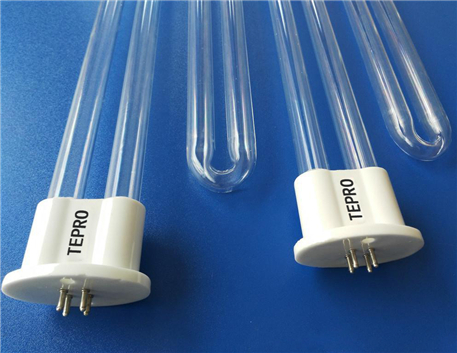In the production process of rubber tire, some amount of rubber tire exhaust will be produced. The pollution factors of this waste gas are mainly industrial dust, odor and other pollutants. Although the pollution intensity is not high, the emission of waste gas is large and the pollution composition is complex and changeable. In particular, the odor composition in waste gas causes pollution to the surrounding environment and factory environment, and it is difficult to avoid the disturbance of people. The main components of tire production exhaust: the odor components of rubber tire exhaust are complex and varied. It can be roughly divided into five categories:
1) compounds containing sulfur: such as H2S, SO2, mercaptan;
2) dust: such as carbon black;
3) chlorine-containing compounds, such as amides and indoles;
4) hydrocarbons: such as alkanes, alkenes, hydrocarbons, aromatic hydrocarbons;
5) organic compounds containing oxygen, such as alcohols, phenols, aldehydes, ketones, organic acids, etc.
Among them, inorganic substances include H2S, SO2, carbon, etc., and most of the raw materials produced by malodorous gases are organic substances. These substances are harmful to human health. From the above mentioned processes, it can be known that the main production links of rubber tire exhaust are rubber refining and vulcanization.
(1) rubber refining process: rubber refining includes plastic refining and mixing.
Refining: in order to meet the requirements of plastic materials for various processing processes, the raw rubber is usually processed under the condition of mechanical processing, so that it changes from the elastic state of strong and tough to the soft and plastic state, this process is called plasticizing. Mixing: it is to mix plastic mixing rubber or plastic rubber with compound under mechanical action to make rubber, so as to make rubber products with various properties. The mixing process can be divided into four stages: mixing, dispersing, mixing and plasticizing. The rubber wheel factory has a large amount of rubber smelting, so it is necessary to add all kinds of additives and raw rubber into the feeding port of the mixer when mixing rubber, so some amount of raw material leakage and some amount of dust leakage will occur in this process. In addition to soot and water vapor, there is also a mixture of oils, including emulsified and emulsified oils. The particle size of emulsion oil is less than 10 micron, generally 0.1-2.0 micron. The gas contains surfactant, which makes the oil droplets a stable emulsion. When they stay in the pipe, they form an oily substance. The main pollutants in rubber refining waste gas include dust, hydrogen sulfide, carbon disulfide, toluene and non-total hydrocarbon.
(2) curing process
Vulcanization is the plastic and viscous rubber material after the molding process and made of cots semi-finished products in external conditions through chemical factors (such as vulcanization system), re converted into soft elastic rubber products or hard ductile rubber products, so as to obtain the service performance of the process.In the process of sulfide, the external conditions of mixing rubber and rubber components of vulcanizing agent produces chemical reaction, by linear couplet three-dimensional reticular structure of rubber macromolecule macromolecular, which greatly improved the various properties of rubber, the rubber roller obtained to meet the need of product use hardness, heat resistance, ageing resistance, resistance to acid and alkali, high temperature resistant, elastic and other physical and mechanical properties and other performance. The essence of vulcanization is crosslinking, i.e. the transformation of linear rubber molecules into spatial network structure. Vulcanization can be divided into four stages: scorch stage, hot vulcanization stage (less sulfur stage -- pre-sulfur stage), vulcanization flat stage (normal sulfur stage -- normal sulfur stage), and sulfur oversulfur stage (oversulfur stage). Vulcanizing agents used in the vulcanization process are divided into two categories: inorganic and organic.Sulfur, sulfur monochloride, selenium, tellurium, etc.The latter group includes sulfur containing agents (such as TMTD), organic peroxides (such as quinone oxime compounds, polysulfide polymers, ethyl formate, maleimide derivatives, etc.Rubber vulcanizing agents include element sulfur, selenium, tellurium, sulfur containing compounds, peroxide, quinone compounds, amine compounds, resin compounds, metal oxides and isocyanates, etc. Elemental sulfur and sulfur-containing compounds are commonly used. Therefore, the main components of the waste gas produced in the vulcanization process are sulfur compounds, oxygen-containing organic compounds, hydrocarbons and so on.
How does ultraviolet light deal with rubber exhaust?
Product technical principle of ultraviolet photolysis technology:
1, the product with high ozone UV ultraviolet beam, fetor, cracking odorous gases such as ammonia and trimethylamine, hydrogen sulfide, hydrogen sulfide and methyl mercaptan, methyl sulfide, dimethyl disulfide, carbon disulfide and styrene, sulfide H2S, VOC, molecular chain structure of benzene, toluene, xylene, organic or inorganic polymer odorous compounds molecular chain, under ultraviolet light irradiation, degraded into low molecular compounds, such as CO2, H2O, etc.
2, UV beam is used to crack the molecular bonds of bacteria in odorous gas, destroy the nucleic acid (DNA) of bacteria, and conduct oxidation reaction through ozone to achieve the purpose of deodorization and killing bacteria.
Ii. Use high-ozone UV ultraviolet beam to decompose oxygen molecules in the air to produce free oxygen, namely reactive oxygen species. Due to the imbalance of positive and negative electrons carried by free oxygen, it needs to combine with oxygen molecules to produce ozone.
UV+O2→O-+O * (reactive oxygen species)O+O2→O3(ozone), it is well known that ozone has a strong oxidation effect on organic matters, and has an immediate effect on odorous gases and other irritating odors.


